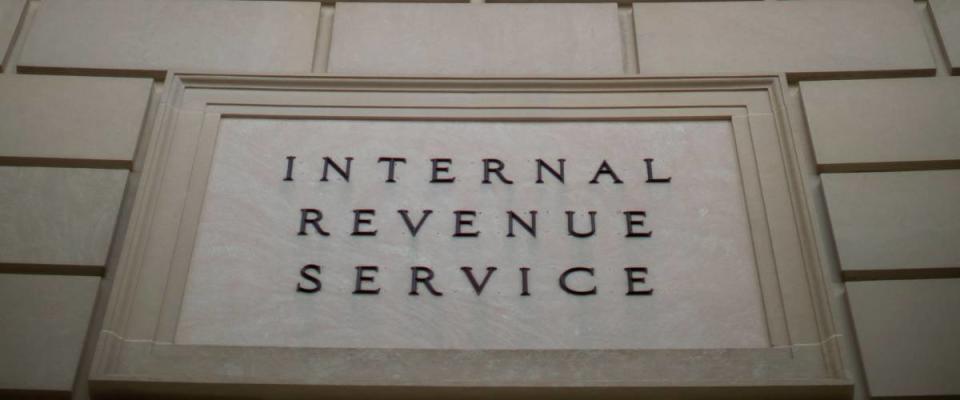4 possible reasons you're still looking for your second stimulus check

Long after Americans received their first coronavirus aid payments, the IRS is finally sending you a second "stimulus check."
The Joneses next door already got their money via direct deposit — so where’s your $600?
Don’t panic. As long as you’re eligible for one of these "economic impact payments," you’ll get your relief funds. (And then can start waiting for a third possible stimulus check.)
Coming ‘as quickly as possible’

The second round of stimulus checks started hitting bank accounts on Wednesday, Dec. 30.
If you're set up for direct deposit with the IRS, you might have noticed a payment marked as "pending" in your account before the scheduled payment date of Jan. 4. If that never happened, the tax agency may be sending you the cash through a different method.
“We are working swiftly to distribute this second round of payments as quickly as possible,” IRS Commissioner Chuck Rettig says, in a news release.
Here are four possible reasons you don’t have the money in hand quite yet — and what you might need to do to get it.
1. Your check (or debit card) is in the mail
If you aren’t set up to receive a direct deposit, keep an eye on your mailbox for a paper check or preloaded debit card.
As was the case with the first phase of payments last spring, the IRS says it's sending out debit cards to speed the delivery of relief money, noting that "some people who received a paper check last time might receive a debit card this time, and some people who received a debit card last time may receive a paper check."
The agency says some 8 million payments will be issued on debit cards, which carry a few additional steps.
For starters, as with other debit or credit cards, you’ll need to call to activate the card and create a PIN code.
The first round of stimulus debit cards also had an expiration date — but not to worry, the funds never expire even if the card does. You’ll just need to call and request that the balance be transferred to you another way.
2. You changed your address or bank account
The IRS is using the information it has on file to send taxpayers their second payments.
But it’s been a busy year — and if you moved or switched bank accounts, how will the tax people find you?
If, for any reason, the IRS can’t manage to send you the money, you’ll need to claim it instead as a credit on your 2020 federal income tax return. Technically, the relief money is an advance payment on what’s called the Recovery Rebate Credit.
3. The IRS can't get your payment out by its deadline

The legislation approved by Congress gives the Treasury Department until Jan. 15 to send out relief money, which is a lot of work in just a few weeks. If you don’t get the payment during that window, you, too, will need to claim it on your taxes — and potentially receive your cash as a tax refund.
The same goes if you receive less money than you're entitled to. Individuals receive up to $600, married couples who file joint returns get $1,200, and families get $600 for each qualifying child.
If waiting until tax time seems like a terribly long delay, remember that last year tax season opened on Jan. 27 — so you might be able to file an early return in just a few weeks.
4. You’re not eligible for the second stimulus check
Before you get your hopes up, double-check that you’re even eligible to receive the coronavirus relief money. Here’s a list of people who won’t be receiving a second check:
High earners: If your income is on the high side — based on your 2019 tax return — you won’t be receiving a stimulus check. The limit is $87,000 for single people, and $174,000 if you file a joint tax return with your spouse.
"Nonresident aliens": This official IRS designation includes those who aren’t U.S. citizens, don’t have a green card and haven't been in the U.S. for enough time to qualify.
People the IRS doesn't know about: The tax agency automatically sends you money if you filed a 2019 tax return, or receive government benefits including Social Security or veterans benefits. If Uncle Sam doesn’t have any information about you, don't expect to receive anything.
What if $600 just doesn't cut it?

Statistics indicate many Americans are still in financial pain from COVID-19: The U.S. has 10 million fewer jobs and an estimated 7.8 million more people in poverty compared to early in 2020, and a recent census survey found more than 85 million Americans are having trouble paying rent and covering other regular expenses.
If you can relate and need more than the $600 being distributed right now, here are a few ideas to pull more money together on your own:
Slash your spending, where possible. Cut loose any subscription services you're not using. Do more of your own cooking and don't order carryout so much. And download a free browser add-on that will help you save every time you shop online by instantly checking for better prices and coupons.
Cut the cost of your debt. If you’ve been leaning heavily on credit cards during the coronavirus crisis, you've probably racked up a ton of interest. Shrink your credit card debt — and make it go away more quickly — by rolling your balances into a single debt consolidation loan at a lower interest rate.
Stop paying so much for your insurance. Many car insurers have lowered their rates because Americans are staying home more and driving less. If your insurance company won’t give you a break, it’s time to shop around for a cheaper policy. You also might save hundreds on your homeowners insurance by comparing rates to find a better deal.
Refinance your mortgage and lower your payments. Mortgage rates are the lowest in history, and refinancing your existing home loan can provide huge savings. Mortgage tech and data provider Black Knight says 19.4 million U.S. homeowners could cut their monthly house payments by an average $308 per month through a refi.

